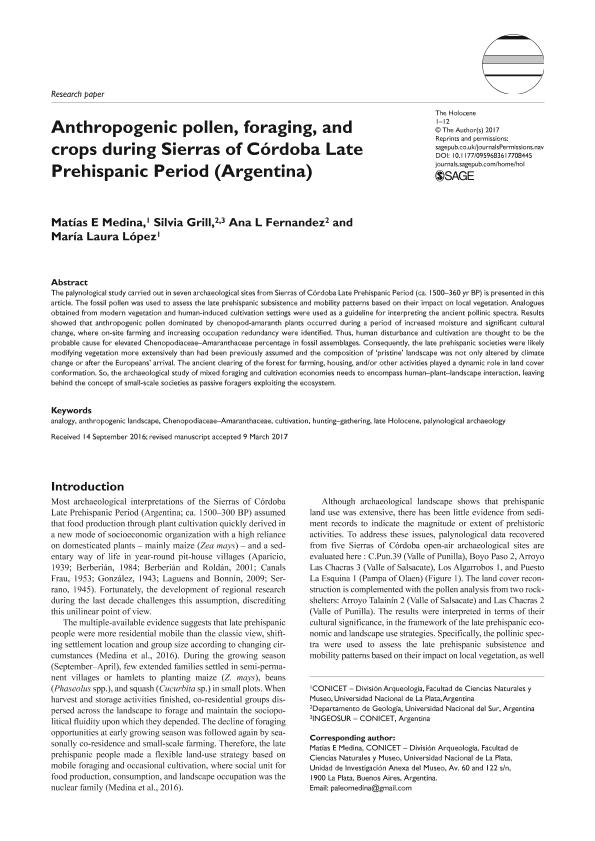Artículo
Anthropogenic pollen, foraging, and crops during Sierras of Córdoba Late Prehispanic Period (Argentina)
Fecha de publicación:
11/2017
Editorial:
Sage Publications Ltd
Revista:
Holocene (Seven Oaks)
ISSN:
0959-6836
Idioma:
Inglés
Tipo de recurso:
Artículo publicado
Clasificación temática:
Resumen
The palynological study carried out in seven archaeological sites from Sierras of Córdoba Late Prehispanic Period (ca. 1500–360 yr BP) is presented in this article. The fossil pollen was used to assess the late prehispanic subsistence and mobility patterns based on their impact on local vegetation. Analogues obtained from modern vegetation and human-induced cultivation settings were used as a guideline for interpreting the ancient pollinic spectra. Results showed that anthropogenic pollen dominated by chenopod-amaranth plants occurred during a period of increased moisture and significant cultural change, where on-site farming and increasing occupation redundancy were identified. Thus, human disturbance and cultivation are thought to be the probable cause for elevated Chenopodiaceae–Amaranthaceae percentage in fossil assemblages. Consequently, the late prehispanic societies were likely modifying vegetation more extensively than had been previously assumed and the composition of ‘pristine’ landscape was not only altered by climate change or after the Europeans’ arrival. The ancient clearing of the forest for farming, housing, and/or other activities played a dynamic role in land cover conformation. So, the archaeological study of mixed foraging and cultivation economies needs to encompass human–plant–landscape interaction, leaving behind the concept of small-scale societies as passive foragers exploiting the ecosystem.
Archivos asociados
Licencia
Identificadores
Colecciones
Articulos(CCT - LA PLATA)
Articulos de CTRO.CIENTIFICO TECNOL.CONICET - LA PLATA
Articulos de CTRO.CIENTIFICO TECNOL.CONICET - LA PLATA
Citación
Medina, Matias Eduardo; Grill, Silvia Cristina; Fernandez, Ana L.; Lopez, María Laura; Anthropogenic pollen, foraging, and crops during Sierras of Córdoba Late Prehispanic Period (Argentina); Sage Publications Ltd; Holocene (Seven Oaks); 27; 11; 11-2017; 1769-1780
Compartir
Altmétricas




